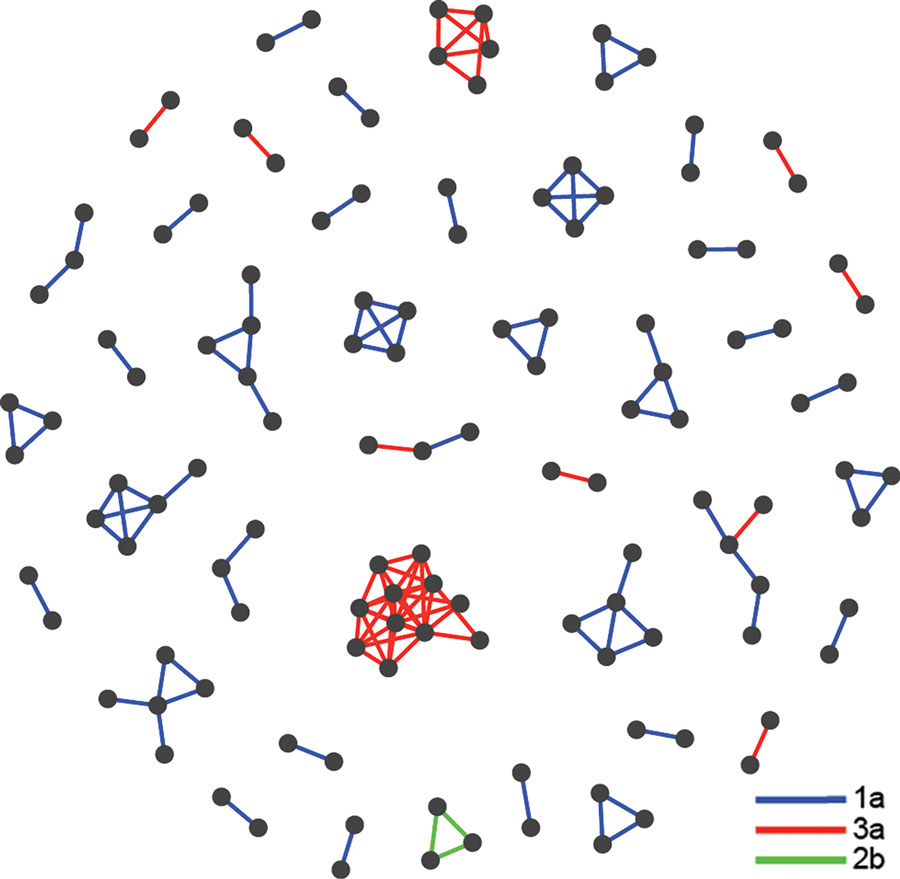Volume 27, Number 2—February 2021
Research
Hepatitis C Virus Transmission Clusters in Public Health and Correctional Settings, Wisconsin, USA, 2016–20171
Figure 2

Figure 2. Hepatitis C virus (HCV) transmission network among persons in public health and corrections settings, Wisconsin, USA, 2016–2017, showing 42 clusters identified by Global Hepatitis Outbreak and Surveillance Technology (GHOST). Each node represents an HCV-infected person for whom HCV sequence data were generated. A transmission link is denoted as a line connecting persons where the minimal Hamming distance between sequences is smaller than the previously validated genetic threshold of 3.77%. Lines connecting clusters are colored according to genotype.
1The methods described in this article, along with preliminary results from the first 231 specimens analyzed, were presented in poster format at the 8th International Conference on Hepatitis Care in Substance Users; 2019 Sep 11–13; Montreal, Quebec, Canada.
2These first authors contributed equally to this article.
3These senior authors contributed equally to this article.